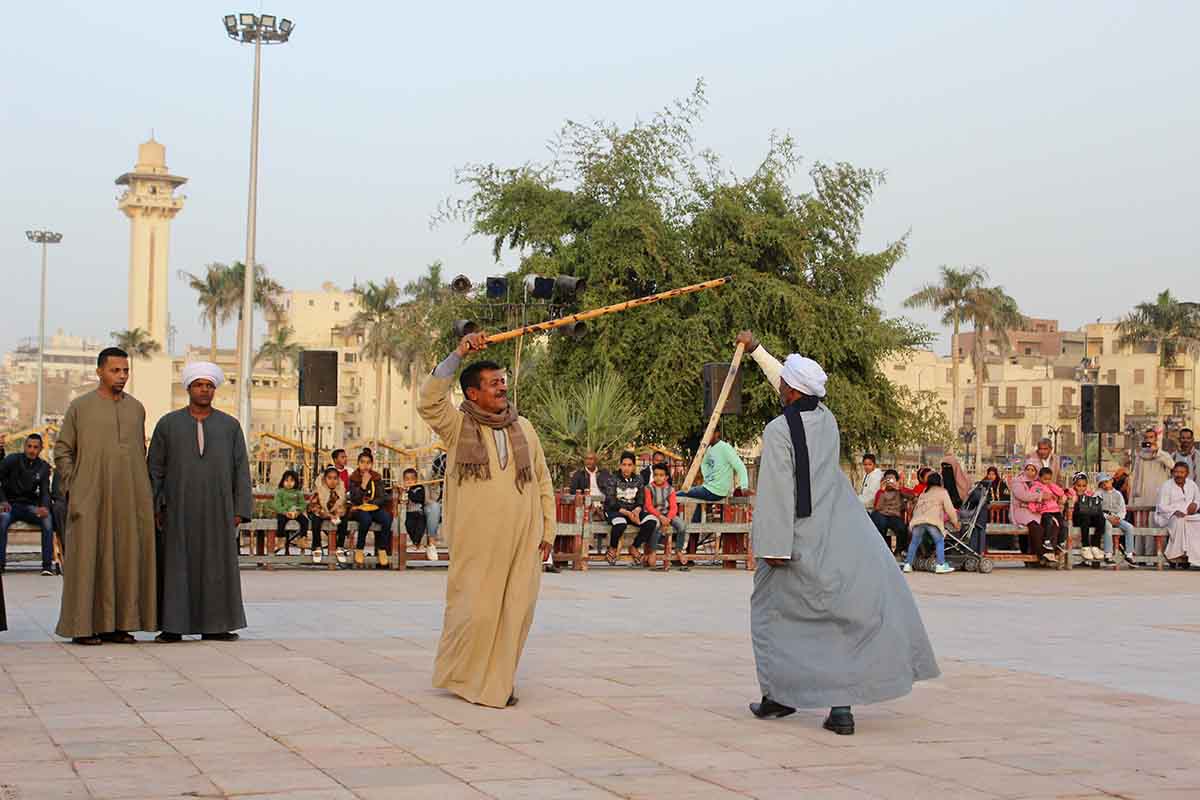As we told you in
this post about the World Heritage Site in Egypt
the tahtib is one of the traditions recognized and protected by UNESCO as Intangible Cultural Heritage, along with other folkloric expressions such as the epic Al-Sirah al-Hilaliyyah or sa’eed hand weaving. And in this post we have decided to explain in depth what it consists of, in case you want to add a touch of popular culture to your trip around the country.
What is tahtib
The tahtib is a typical Egyptian cultural expression that uses wooden sticks and has a bit of martial art, fencing and dance. In fact, there are many who consider the tahtib an Arabian dancealthough, to be more precise, it should be said that its origin is earlier, much earlier: it is known that this singular discipline was already practiced in Ancient Egypt, as shown, for example, by different drawings on ostracon and preserved in museums such as the Louvre.
The tahtib He ‘pits’ two men against each other, wielding their wooden sticks, about one meter long. We use the term ‘confronting’ in quotation marks because, in reality, it is a non-violent combat that forbids hitting the other contender with the cane. The objective is to simulate a combat, clashing the batons with each other with colorful and coordinated movements, where there is no shortage of turns, twists and other tricks.
As you can see, the tahtib is practiced only by men of all ages, while traditional music, usually wind music, is played. In fact, this dance or martial art is considered a symbol of virility and an exaltation of values such as courage and strength, but also chivalry, friendship and mutual respect.
However, with the passage of time a female version has emerged: the Raks Al Assaya, also in pairs and with sticks, but in this case with a more choreographic sense as a dance.

Where to watch this dance
Witness a show of tahtib is not easy, since they are not organized as ticketed performances. In reality, this dance usually takes place in the street or in a public place in front of a local audience, which forms a large circle in the center of which the two opponents perform. The tahtib is more common in rural areas where this spectacle serves to strengthen ties between families and communities, especially among saidis communities in Upper Egypt.
It is also common for the tahtib is also performed as part of a wedding party, adding atmosphere and joy to the celebration, since all the people who participate in this dance (contestants and audience) do it with a smile on their faces.
In any case, if you want to know more about the tahtib or even want to try to witness one of these dances live, you can consult the professionals of our agency: we have Egyptian staff who have a large number of contacts, of course, and will be happy to give you more information. in situ.






